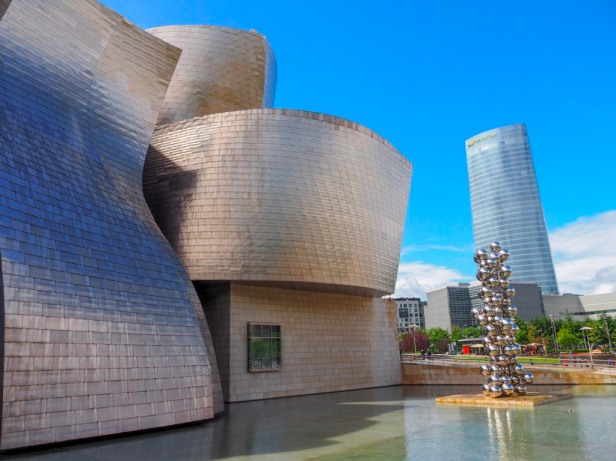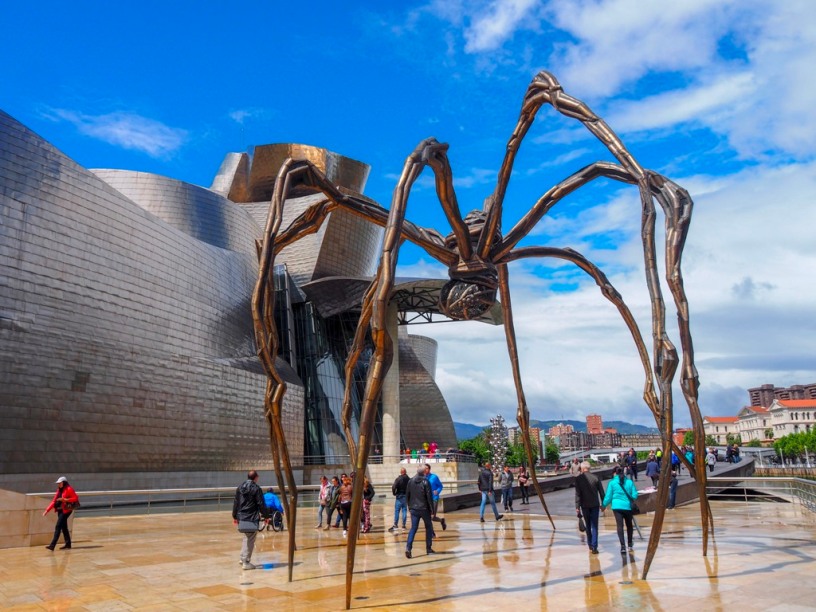Are you planning a trip to Europe and wonder which European cities to visit?
Clearly, London, Paris and Rome will come to mind immediately. Next you might think of Berlin, Amsterdam or Barcelona.
No doubt, all of these destinations are fantastic and they should rightly be on your list. But keep in mind, they will also be most likely on everybody else’s list too. Which means chances are high you will find them crowded during large parts of the year.
Thankfully, there are many excellent alternatives that offer a high level of history, culture, magnificent monuments and buildings, art, shopping along with a lively and excellent culinary scene.
So here are my top five alternative European cities that definitely should be on your bucket list.
Bilbao, Spain
Bilbao, the largest city in the Basque Country in northern Spain, has gained much attention in recent years thanks to the world famous Guggenheim Museum.


The Guggenheim might be one of the main draws but there are numerous other attractions making Bilbao a great place to visit.



The old historic town centre dating back to the 15th century with Las Siete Calles (the seven streets), its main square, Plaza Nueva which still is the largest square in the city and the most important gothic building in the Basque country, Catedral de Santiago de Bilbao (also known as the Cathedral of St. James).
Food is another important reason to visit the Basque country and whilst it is San Sebastian taking the crown of Michelin-starred restaurants, Bilbao has its share of excellent restaurants too.
Porto, Portugal
Portugal’s second largest city has become increasingly popular over recent years, and with good reason.

The drop dead historic old town is perfectly walkable and offers a number of attractions including Sao Bento train station whose entrance hall is entirely clad in the famous blue and white azulejos, the Cathedral, Clerigos Tower and the six bridges spanning the river, each built in a different era.


The historic Ribeira neighbourhood is an UNESCO World Heritage site. Sitting right at the river bank, it’s lines with numerous small bars and restaurants and during the summer months there is also a lot of live action on the river bank, with music late into the night.
Porto is also the world capital of port wine. Despite the wine is grown and increasingly also made in the Douro Valley, around two hours from Porto, all of the large port houses still maintain their cellars in the Porto. Or more precisely, in Vila Nova de Gaia on the other side of the Douro river.
Bologna, Italy
Emilia-Romagna is home to some of the most famous Italian foods like Parmigano Reggiano, Parma ham, and Tortellini to name just a few.

 Images: Pixaby
Images: Pixaby
Bologna, the capital city of Emilia-Romagna is indeed regarded as one of the best places for food in Italy; a verdict it has from the Italians themselves and these are some of the most spoiled and thus critical people when it comes to judging food.
Bologna is often overlooked by international travelers but it is a great place from where to explore the wider Emilia-Romagna area. Starting in the city itself with its splendid sprawling Piazza Maggiore lined with arched colonnades, the Basilica of San Pietro and the Fountain of Neptune. The city is also home to a spectacular leaning tower. Yes, a different one then the world famous leaning tower of Pisa. In fact, Garisenda tower leans more dramatically than the one in Pisa.
Gothenburg, Sweden
Sweden’s capital Stockholm currently takes all the hype and whilst the city is absolutely wonderful, especially during the summer months it is starting to feel a bit crowded.




Head to smaller Gothenburg in the southern parts of Sweden instead. The city spreads the same hyggefeeling but you won’t see as much tourists swarming the streets.
Walk along the canal, explore Gothenburg’s oldest district Haga including a hike up to Skansen Kronan the old fortified tower built to defend the city from the Danish and definitely pay a visit to Feskekorka, the fish market located in a building resembling a church to sample the freshest local fish.
Hamburg, Germany
One of the larger German cities, Hamburg is still often overlooked when it comes to decide where to go in Germany.

Even though located around 100 kilometres from the coastline, Hamburg is nevertheless one of the northern European cities dominated by water. Thanks to the Elbe river, the artificial inner-city Alster Lake and the many small canals twisting and weaving their way through the town centre you are never far from the water. Believe it or not, Hamburg has actually more bridges than Venice in Italy!


Seek out the old town built in the typical Hanseatic style, Speicherstadt (the historic warehouse district), built between 1885 and 1927, now a protected UNESCO Site characterized by brick buildings nestled along beautiful small canals, the adjacent Kontorhaus district built during the early 20th century as an extension to Speicherstadt, stroll around the famous Landungsbrücken (the harbour area) and finally head to Hafencity, Europe’s largest urban regenerations site on a former disused shipyard which kicked off at the start of the 2000s and is still ongoing. Its flagship development, the Elbphilharmonie, Hamburg’s new concert hall characterized by its sparkling glass facade, sitting on top of a former brick warehouse.
What is your favourite European city?
Have you ever been to one of the five cities above? If yes, did you like them?
